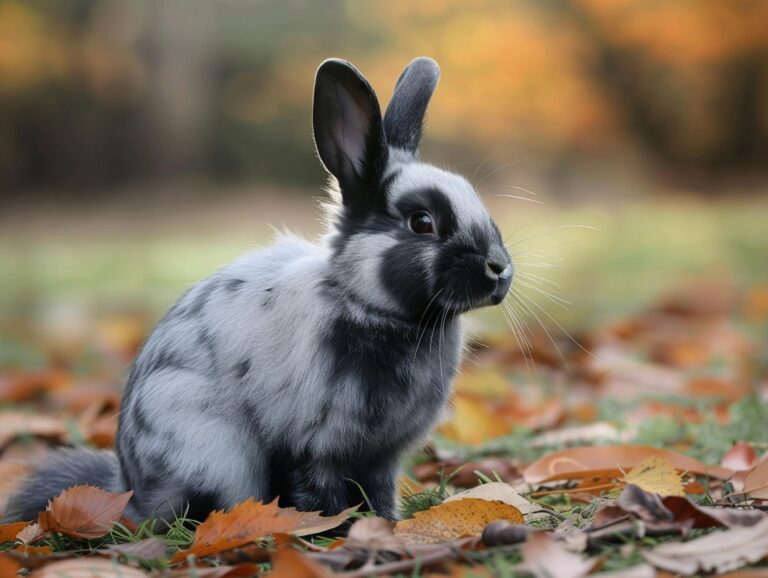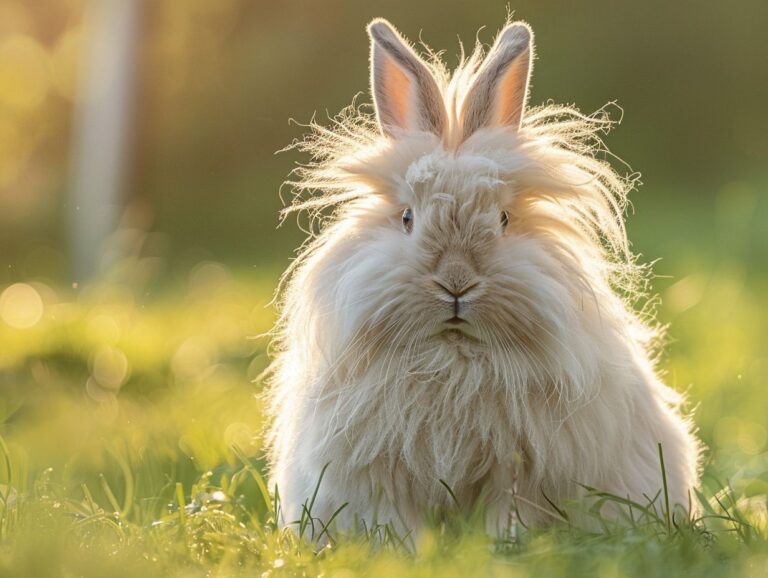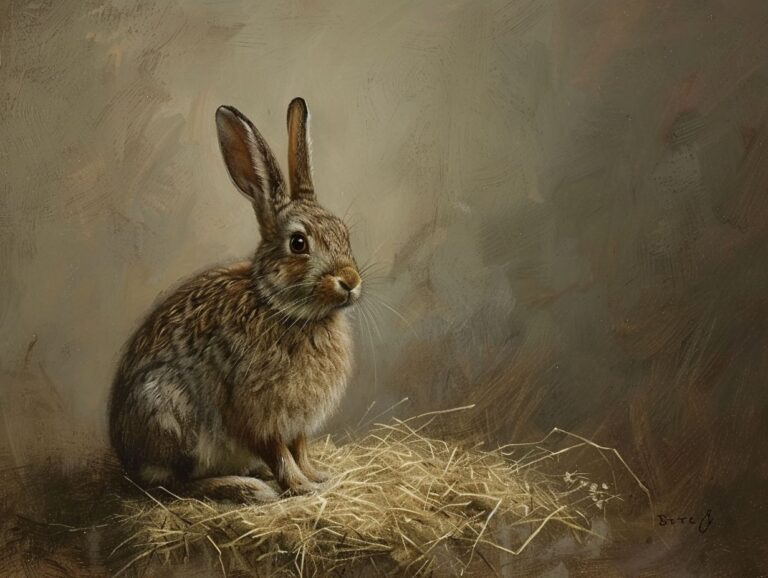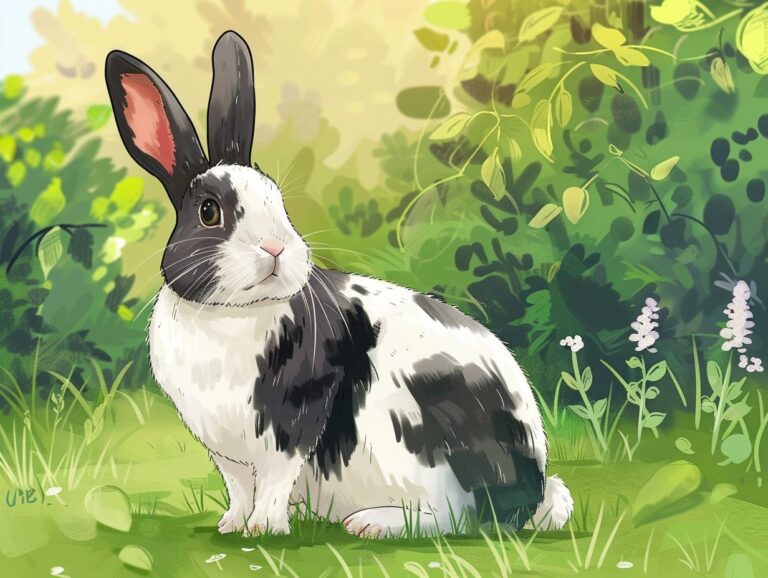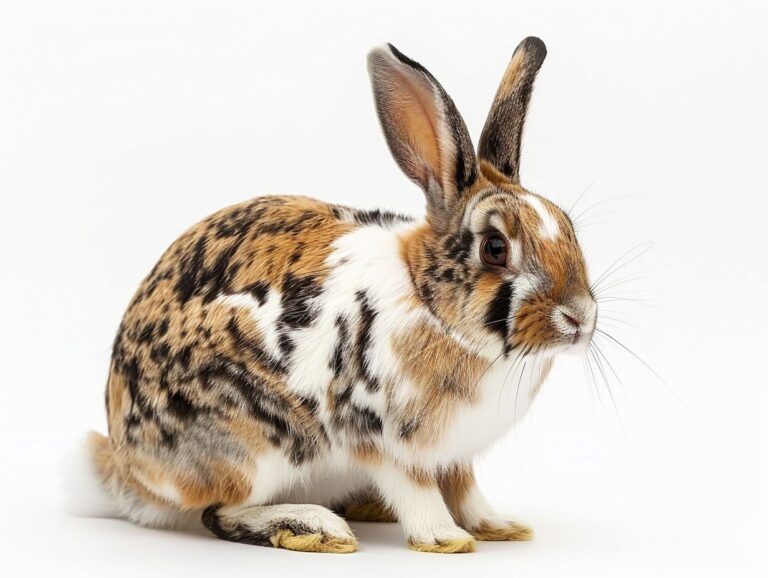Rex Rabbit Breed: Characteristics, Care, History, and Breeding Practices
Have you ever wondered what makes a Rex rabbit unique? From their physical characteristics to their temperament traits, Netherland Dwarf rabbit breed are a fascinating breed with a rich history.
This article will explore everything you need to know about caring for a Rex rabbit, including their housing needs, diet requirements, and grooming habits. We will also delve into the history of the Rex rabbit breed and discuss common breeding practices, including the best breeding age and conditions.
Whether you are a seasoned rabbit owner or considering adding a Rex rabbit to your family, this article will provide you with valuable information on how to choose and care for a healthy Rex rabbit.
Key Takeaways:
What Is a Rex Rabbit?
A Rex Rabbit is a breed known for its distinct fur texture, which is the result of a genetic mutation. This breed is popular among pet owners and breeders due to its unique characteristics.
Rex Rabbits originated in France in the early 1900s, and their genetic makeup sets them apart from other rabbit breeds. The gene responsible for their velvety fur was the outcome of a spontaneous mutation that occurred within another breed. This mutation led to the development of the Rex Rabbit, which quickly gained attention for its soft, plush coat.
The popularity of Rex Rabbits skyrocketed thanks to their charming appearance and docile temperament, making them ideal pets for families and individuals alike. Breeders also favor Rex Rabbits for their distinctive fur quality, which is sought after in the fur industry due to its luxurious feel.
What Are the Characteristics of a Rex Rabbit?
Rex Rabbits are recognized for their variety of colors, including Black, Blue, Opal, Chinchilla, Agouti, White, Castor, and Lilac. The body of a Rex Rabbit typically exhibits sturdy build and unique coat texture.
What Are the Physical Characteristics of a Rex Rabbit?
The physical characteristics of a Rex Rabbit include a compact body structure, soft and dense fur, and distinctive whiskers. These rabbits are known for their velvety coat that lacks guard hairs.
These adorable creatures have a rounded body with short legs, giving them a low-to-the-ground appearance. Their fur is exceptionally plush to the touch, resembling velvet in both look and feel. The fur of a Rex Rabbit has a unique quality known as ‘rollback,’ where the fur naturally falls back into place after being petted or disturbed, adding to their charming appeal.
What Are the Temperament Traits of a Rex Rabbit?
Rex Rabbits are generally known to be friendly, gentle, and sociable pets. They exhibit a calm temperament, making them suitable companions for individuals seeking affectionate and low-maintenance pets.
Their sociability allows them to thrive in households with other animals, including other rabbits or even dogs and cats. The calm demeanor of Rex Rabbits also makes them a great choice for families with children, as they are less likely to become easily startled or aggressive. Their gentle nature and easy-going personality make them a joy to interact with, whether it’s for cuddling on the couch or playing in a secure outdoor space.
How to Care for a Rex Rabbit?

What Type of Housing is Suitable for a Rex Rabbit?
A suitable housing setup for a Rex Rabbit should consist of a spacious enclosure that allows for exercise and exploration. The enclosure should be secure, well-ventilated, and furnished with bedding and nesting materials.
It is recommended that the enclosure for a Rex Rabbit be at least 4 square feet of space per rabbit, allowing ample room for activities and movements. It is essential to provide hiding spots and tunnels for your furry friend to feel secure and cozy. Proper ventilation is crucial to maintain air quality and prevent the buildup of ammonia from urine. Access to fresh hay, water, and chew toys inside the enclosure will keep them mentally stimulated and physically healthy.
What Should a Rex Rabbit’s Diet Consist Of?
A Rex Rabbit’s diet should primarily consist of high-quality hay, fresh vegetables, and a limited amount of commercial rabbit pellets. Fresh water should always be available for the rabbit to stay hydrated.
Hay is an essential component of a Rex Rabbit’s diet as it provides fiber necessary for proper digestion and helps wear down their continuously growing teeth.
- Vegetables add variety and important nutrients such as vitamins and minerals. It is crucial to introduce new vegetables gradually to prevent digestive upset.
- Commercial rabbit pellets can be given in moderation to ensure balanced nutrition, but they should not make up the majority of the rabbit’s diet.
Water consumption is vital to prevent dehydration and maintain overall health in these furry companions.
How Often Should a Rex Rabbit Be Groomed?
Rex Rabbits should be groomed regularly to maintain their fur quality and prevent matting. Grooming sessions should include gentle brushing to remove loose fur and debris from the coat.
Grooming frequency for Rex Rabbits may vary depending on the individual rabbit’s coat length and condition. In general, it is recommended to brush your Rex Rabbit at least 2-3 times a week. When brushing, use a soft-bristled brush or a grooming mitt to carefully work through the dense, velvety fur of the Rex Rabbit. Consistency is key to prevent tangles and matting, which can be uncomfortable for the rabbit and lead to skin issues.
What Is the History of the Rex Rabbit Breed?
The history of the Rex Rabbit breed traces back to early 20th-century Europe, where breeders like John C. Fehr and Alfred Zimmerman played pivotal roles in developing and popularizing the breed. The American Rabbit Breeders Association (ARBA) officially recognized the Rex Rabbit breed in the 1920s.
John C. Fehr, a renowned breeder, devoted his efforts to refining the Rex Rabbit, aiming to create a breed with a unique fur texture known as ‘rexing’, which is soft and plush to the touch.
- Alfred Zimmerman, another key figure in the breed’s history, further advanced the development of the Rex Rabbit, focusing on enhancing its size and overall conformation.
- With meticulous selective breeding practices, these pioneers succeeded in establishing a breed that captivated the rabbit breeding community.
Rex Rabbits soon gained popularity for their distinct velvety coats and gentle temperament, attracting rabbit enthusiasts worldwide.
What Are the Common Breeding Practices for Rex Rabbits?

What Are the Best Breeding Age and Conditions for Rex Rabbits?
The best breeding age for Rex Rabbits is typically between 6 to 9 months, once they have reached sexual maturity. Breeding pairs should be introduced in a controlled environment to ensure successful mating and pregnancy.
Rex Rabbits are known for their distinct fur and friendly demeanor, making them popular choices for breeding. To ensure optimal reproductive success, it is essential to provide a stress-free and comfortable environment for the rabbits. Controlling factors such as temperature, lighting, and diet can significantly impact their breeding behavior.
- Female Rex Rabbits are usually ready for breeding between 6-9 months, while males can start mating as early as 4 months.
- Pairing rabbits for breeding should be done carefully, considering compatibility and health status to avoid any complications during the mating process.
What Are the Risks and Challenges of Breeding Rex Rabbits?
Breeding Rex Rabbits comes with risks such as genetic disorders, birthing complications, and behavioral issues. Breeders must be prepared to address these challenges through proper care, genetic testing, and veterinary support.
One of the main genetic concerns in breeding Rex Rabbits is the potential for inherited diseases to be passed on to offspring, which can result in health issues down the line. Veterinary guidance and genetic screening are essential to minimize the risk of passing on these conditions.
Birthing
- difficulties
can arise due to the large size of Rex Rabbit kits, leading to possible
- dystocia
or birthing complications. Breeders need to be vigilant during the birthing process to ensure the safety of both the mother and the kits.
What Are the Different Rex Rabbit Color Varieties?
Rex Rabbits are available in a wide range of color varieties, including Black, Blue, Opal, Chinchilla, Agouti, White, Castor, and Lilac. Each color variation exhibits unique characteristics and markings.
Black Rex Rabbits are known for their deep, velvety fur that shines in the light, giving them an elegant and sophisticated appearance. The Blue variation, on the other hand, showcases a stunning silvery-blue hue that is truly eye-catching. Opal Rex Rabbits feature a soft, creamy coat with iridescent undertones, resembling the delicate hues of a precious opal gemstone. Learn more about the American rabbit breed characteristics, care, history, and breeding practices.
Chinchilla Rex Rabbits display a striking pattern of silver tipping on a white or pearl base, creating a luxurious fur texture that is highly sought after in the rabbit breeding world.
Agouti Rex Rabbits boast a wild rabbit-like appearance, with a mix of colors and bands on each individual hair shaft, giving them a dynamic and natural look.
How to Choose and Care for a Healthy Rex Rabbit?
Choosing and caring for a healthy Rex Rabbit involves selecting a reputable breeder, conducting thorough health checks, and providing proper nutrition and grooming. Regular vet visits and attentive care are essential for maintaining the rabbit’s well-being.
When selecting a Rex Rabbit breeder, look for one with a good reputation for ethical breeding practices and healthy rabbits. Ensure the rabbits are kept in clean, spacious environments and interact well with humans.
Check your Mini Lop Rabbit regularly for signs of illness, including changes in behavior, appetite, or stool consistency. Monitor their dental health by providing appropriate chew toys to prevent overgrowth.
Ensure your Rex Rabbit receives a balanced diet rich in fresh hay, vegetables, and a small amount of pellets. Avoid sugary treats and provide an ample supply of Rhinelander rabbit breed fresh water.
Frequently Asked Questions
What are the characteristics of the Rex Rabbit breed?
The Rex Rabbit breed is known for its soft, dense fur that stands upright, creating a plush appearance. They come in a variety of colors including black, white, chocolate, and many others. They have a compact and muscular body with short, upright ears and round faces.
How should I care for my Rex Rabbit?
Rex Rabbits require a well-balanced diet of hay, pellets, and fresh vegetables. They should have access to clean water at all times. Their fur is prone to matting, so regular brushing is important. They also need plenty of exercise and a clean, spacious living area.
What is the history of the Rex Rabbit breed?
The Rex Rabbit breed originated in France in the early 20th century. They were created by a selective breeding program to produce rabbits with high-quality fur for the fur industry. However, they gained popularity as pets due to their unique appearance and calm, friendly demeanor.
Are there any special considerations for breeding Rex Rabbits?
Breeding Rex Rabbits requires careful planning and knowledge of genetics. It is important to only breed healthy rabbits with desirable traits to avoid passing on any genetic disorders. A professional breeder can provide guidance and assistance in this process.
What are the best practices for breeding Rex Rabbits?
Before breeding, it is important to ensure that both rabbits are healthy and of breeding age. A female rabbit should be at least 6 months old, and a male should be at least 8 months old. The rabbits should also be introduced slowly and monitored closely during the breeding process. It is recommended to have a professional breeder present for the first few times.
Can I keep a Rex Rabbit as a pet and still breed them?
Yes, Rex Rabbits can make great pets while also being bred. It is important to provide them with proper care, socialization, and exercise, just like any other pet. However, if you are not interested in breeding, it is recommended to have your rabbit spayed or neutered to prevent any accidental litters.



